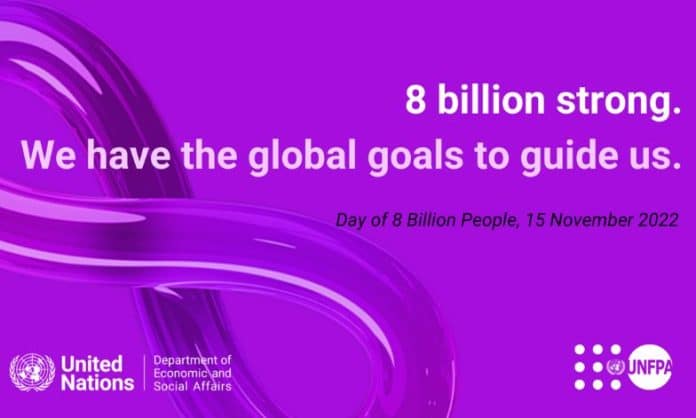November 15 marks a historic milestone, as the world’s population reaches eight billion people. This unprecedented growth is the result of improvements in public health, nutrition, personal hygiene and medicine.
“The milestone is an occasion to celebrate diversity and advancements, while considering humanity’s shared responsibility for the planet,” says United Nations Secretary-General António Guterres.
To mark the day, here are 10 facts on the world’s population.
- 12 years to grow from seven to eight billion
It took 12 years for the global population to grow from seven to eight billion. It is estimated that this figure will peak at 10.4 billion in the 2080s, and remain at that level until 2100.
- Slowing population growth
It will take approximately 15 years —until 2037— for the world population to reach nine billion, a sign that the overall growth rate of the global population is slowing.
Over the next few decades, population momentum will maintain the growth that resulted from the high fertility of previous generations. This is despite the decline in the number of births per woman observed today. But after half a century of declining fertility, this growth is slowing.
The European Union’s average fertility rate in 2020 was 1.50 children.
- One of the world’s most densely populated countries is in Europe
The Principality of Monaco is among the most densely populated countries in the world. In 2016, the recorded population density was 25,411.4 people per km².
Iceland has the lowest population density on the European continent.
- Longer lives
In 2019, global life expectancy at birth stood at 72.8 years, and at 80.4 years in the European Union in 2020.
While life expectancy has been rising since the 1950s, the gaps between countries are not closing fast enough.
In low-income countries, life expectancy at birth is around 63, almost 10 years below the global average.
The EU region with the highest life expectancy at birth was the French island of Corsica (84.0), followed by the Balearic Islands in Spain (83.9) and the Epirus region in Greece (83.8). The EU regions with the lowest life expectancy at birth were all in Bulgaria.
- Almost 5 % more women than men in the EU
As of January 1 2021, there were 229 million women and 219 million men in the EU.
More boys than girls are born worldwide (for every 100 girls born, there are nearly 106 boys), but women live longer than men almost everywhere in the world.
- More than a fifth of the EU population are over 65
In 2019, 20.8% of the EU’s population was aged 65 years or older.
Due to demographic change, the proportion of working-age people in the EU is decreasing while the relative number of retirees is increasing.
- 281 million people live outside their country of birth
While nearly 29 out of 30 people remain in their country of birth, more and more people are moving across borders.
- 44.1 years is the median age of the EU population
This means that half of the EU’s population is older than 44.1 years.
The European regions with the lowest median age are the French overseas regions of Mayotte and Guiana, with a median age of 17.7 and 26.3 respectively, followed by Melilla in Spain (34.4) and Brussels (35.9).
- Over two million COVID-19 related deaths in Europe
The COVID-19 pandemic has had a measurable impact on the population, particularly on mortality rates. Since the beginning of the pandemic, more than two million people have died from the disease in the European Region.
- India and China are the world’s most populous countries
By 2022, more than half of the world’s population will live in Asia. India and China, each with over 1.4 billion people, are the most populous countries today. China’s population is no longer growing, and may start declining as early as 2023, while India, which is experiencing population growth, is expected to surpass it as the world’s most populous country.
Find out more:

